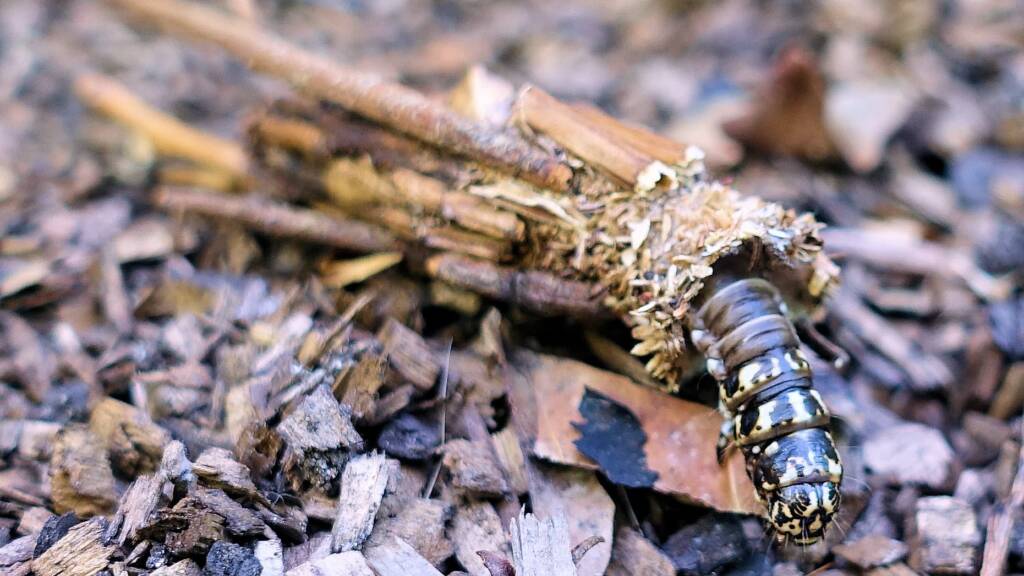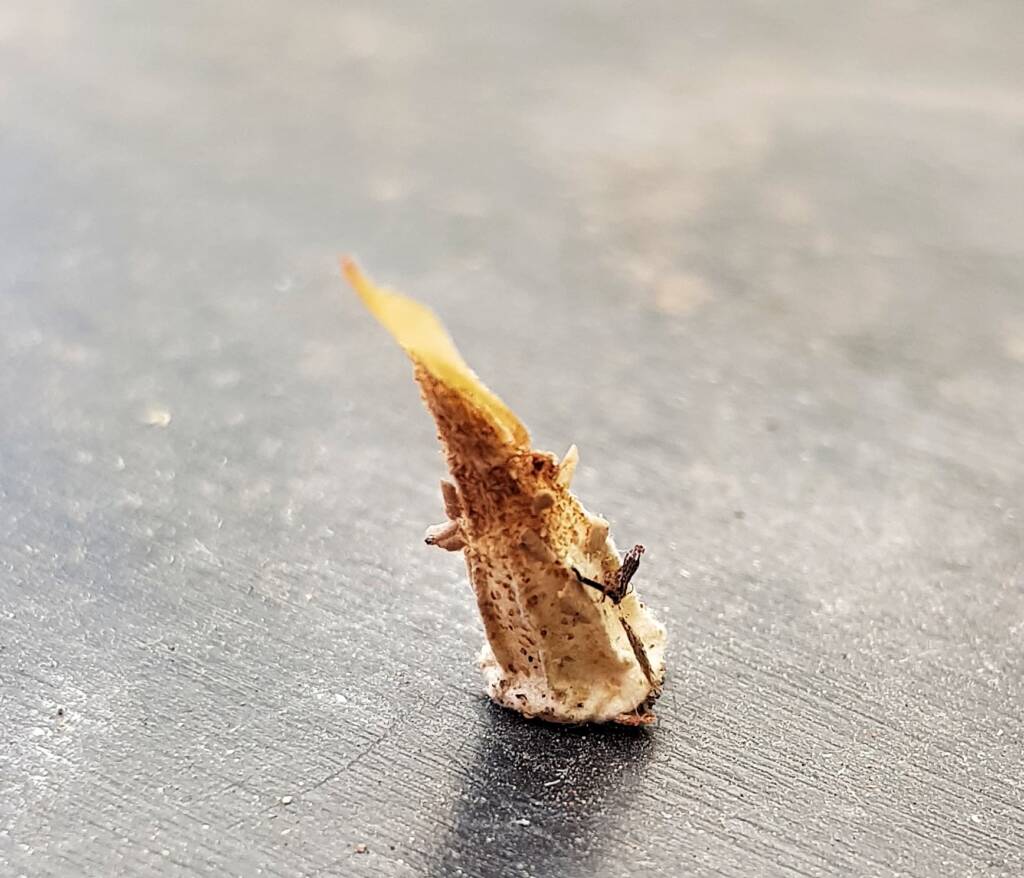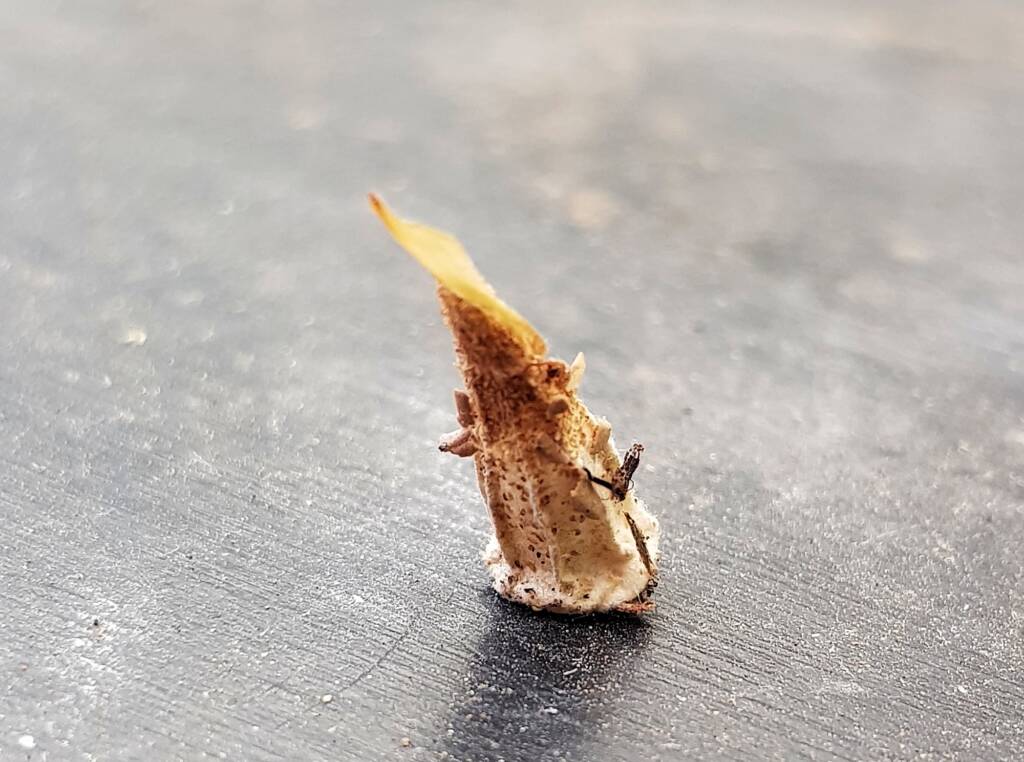MothsMoths Index Aedia arctipennis Anthela guenei (Four-Spot Anthelid Moth) Australian Striped Hawk Moth Bag-shelter Moth (Ochrogaster lunifer) Case Moths (Variety of Cocoons) Coenotes eremophilae Convolvulus Hawk Moth Day Flying Moth Emperor Gum Moth (Opodiphthera eucalypti) Four-spotted Cup Moth Green-blotched Moth (Cosmodes elegans) Leaf Case Moth Mistletoe Emperor Moth Plume Moth Rattlepod Moth (Utetheisa) Ribbed Case Moth Sameodes cancellalis Saunders’ Case Moth (Metura elongatus) White-spotted Owl-Moth
Known collectively as case moths, leaf case moth, leafy case moth, bag moths, ribbed case moth or bagworms, these insects belong to the Family Psychidae, there is thought to be over 1,300 known species worldwide, of which at least 350 species are in Australia.
It is the caterpillar stage of the moth that live in a silken case, that usually get covered with leaf, twigs or both and usually from the plants they are feeding on. If they feed on different plant species, over time they would cover their bag/case with material from these plants as well.
Each species of caterpillar/moth are consistent in the way they decorate their cases and the shape of the case, and can usually be identified from their cases.
The Leaf Case Moth (Hyalarcta huebneri) is a species whose caterpillars make mobile homes from silk, usually attaching plant material, detritus, and even sand grains to the outside of their case.




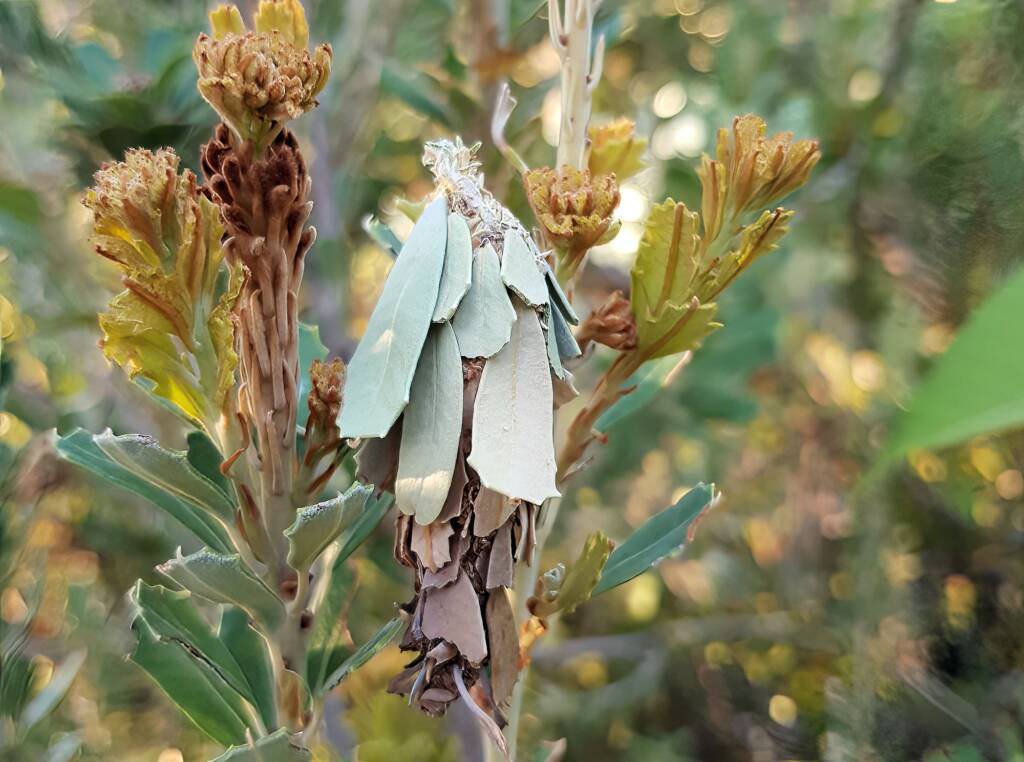


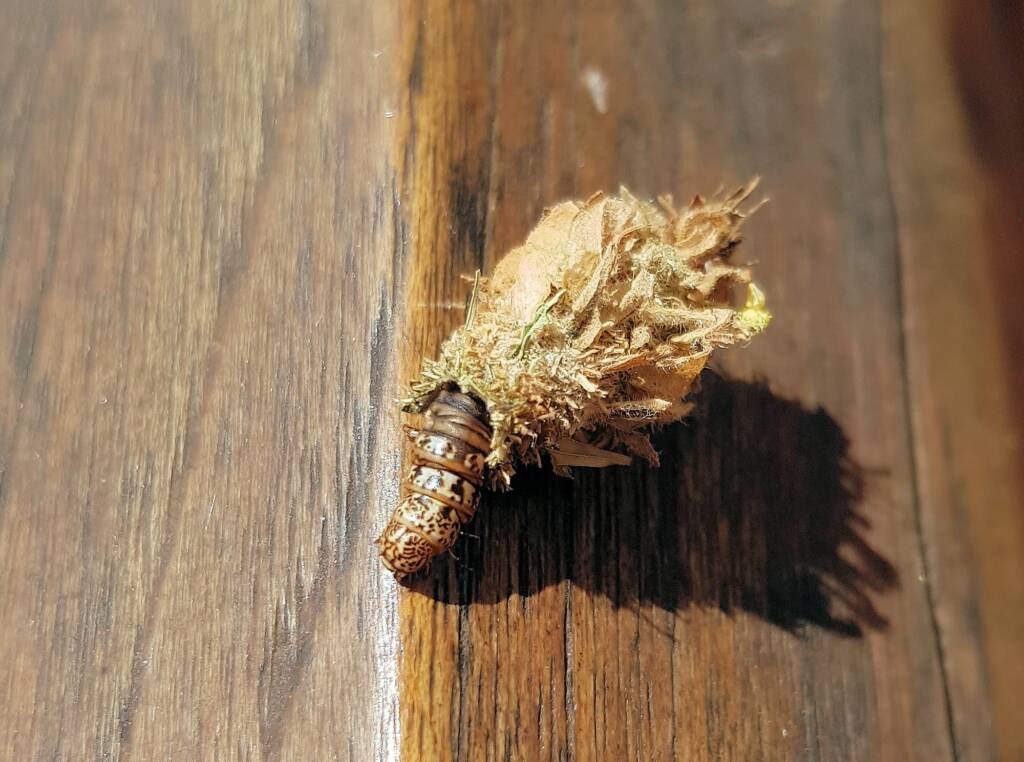
In Central Australia, there are several species of Case Moth, common species being the Leafy Case Moth (Family Psychidae) and the Ribbed Case Moth (Hyalarcta nigrescens).
The Ribbed Case Moth has a case that consists of a silken bag and unlike others is not decorated with plant material, instead it has several ridged ribs running along its length. The Leafy Case Moth uses small pieces of leaf from the host plant to decorate the case, however they have also been known to use pieces of twigs, and is sometimes confused with the Stick Case Moth (Clania lewinii).

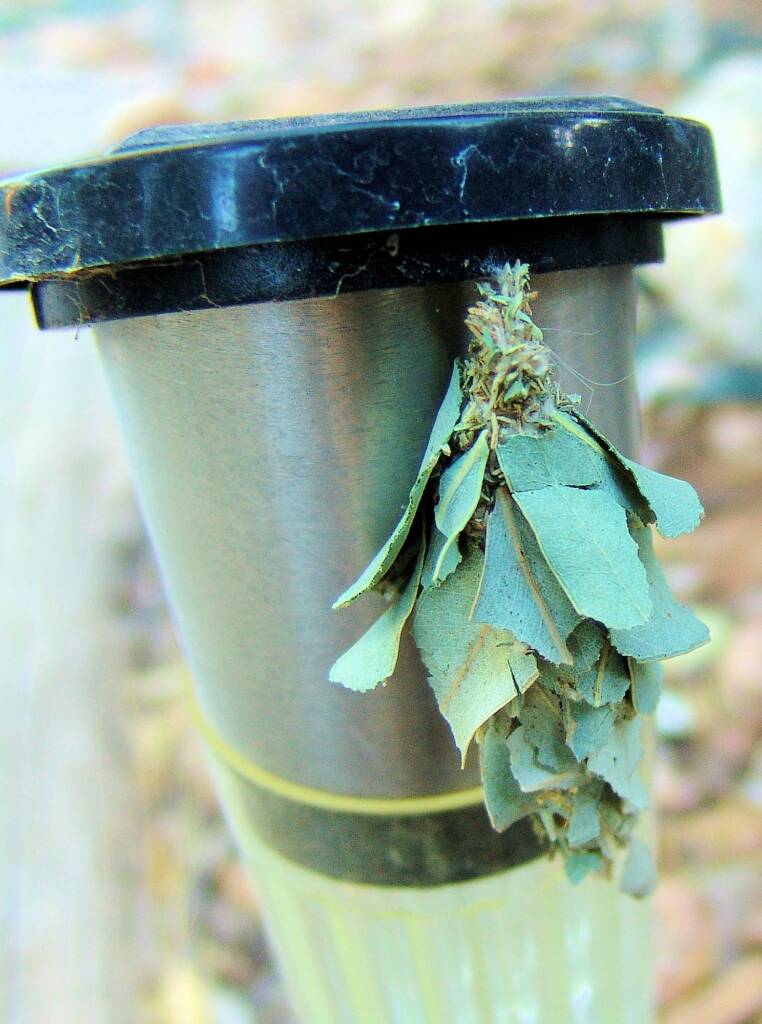
Common name
Leaf Case Moth, Case Moth, Leafy Case Moth, Leafy Case Moth, Bag Moth, Bagworms, Bagworm Moths, Ribbed Case Moth or Bagworms.
Many species of case moth caterpillars feed on plants, whilst others are known to feed on lichens. You can often see them dragging their protective case along the ground, looking for their food plant, a trunk of a shrub or tree to climb up and when ready to pupate, will search for a spot to attach one end of their protective case to a surface such as the shrub/tree they are eating from, with silk and hang there. They have also been seen attached to walls and other man made surfaces.

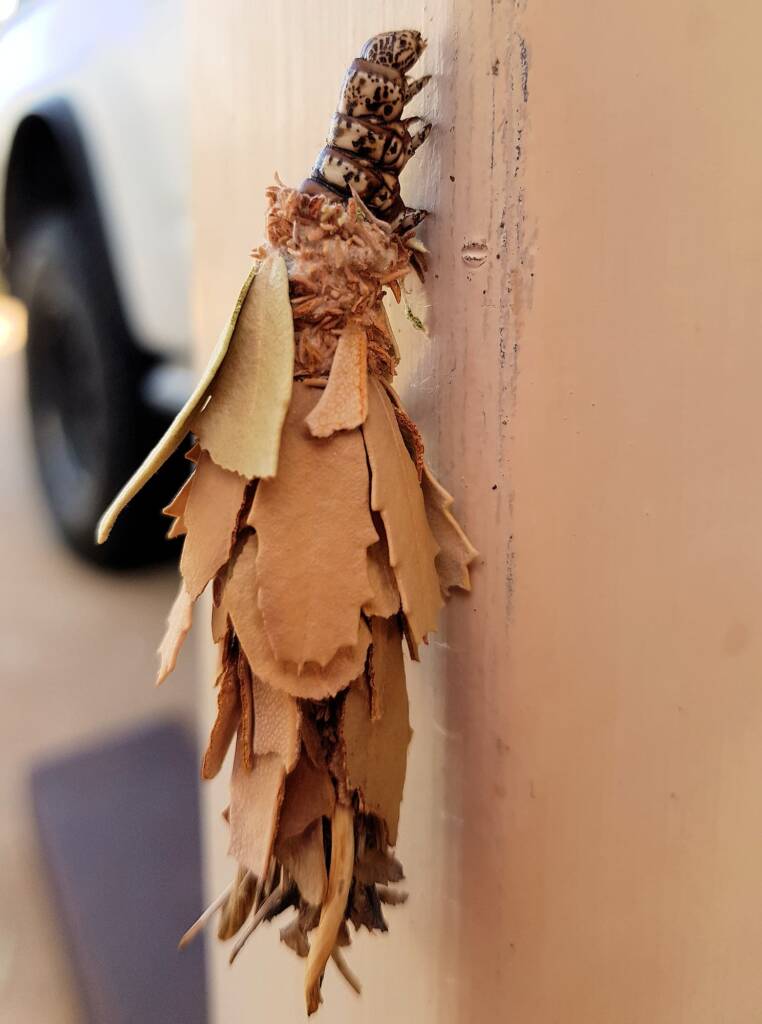




The caterpillars are very skilled climber and are able to climb just about any surfaces by creating a silk ladder attached to the surface they are climbing, as they make their way up the surface.
Sometimes they do make mistakes and climb up the wrong structure, as was the problem with this Ribbed Case Moth, that found itself climbing up a glass door.

Whereas in the following image, a number of Ribbed Case Moth (Hyalarcta nigrescens) had worked their way up to various height on this eucalypt tree.

A close up of one of the Ribbed Case Moth (Hyalarcta nigrescens) on the eucalypt tree pictured above.

The following Case Moth, genus Lomera, family Psychidae, was pictured making its way across the ground, seeking a suitable shrub or tree to climb up.
Pupation can be just a few weeks to a few months depending on the season and the weather. The female adult has no wings and remains in the case. The male has short wings with a longish abdomen, that allows it to mate with the female who remain inside her case, where she lays her eggs.
The discarded casing is left after the moth pupates.



There is some great information on the Coffs Harbour Butterfly House about the Family Psychidae and the variety of moths that create these protective coverings. Check out their page (see Footnote & References below).
- Scientific classification
- Kingdom: Animalia
- Phylum: Arthropoda
- Class: Insecta
- Order: Lepidoptera
- Family: Psychidae
- Subfamily: Oiketicinae
- Genus: Hyalarcta
- Species: Hyalarcta huebneri

Footnote & References
- Some Caterpillar cases of PSYCHIDAE in Australia, Bagworms, Case Moths, TINEOIDEA, by Don Herbison-Evans and Stella Crossley, Coffs Harbour Butterfly House, http://lepidoptera.butterflyhouse.com.au/psyc/psyc-cases.html
- PSYCHIDAE in Australia, Bagworms, Case Moths, Coffs Harbour Butterfly House, http://lepidoptera.butterflyhouse.com.au/psyc/psychidae.html
- Saunders’ Case Moth (Metura elongatus), Australian Museum, https://australian.museum/learn/animals/insects/case-moths/
- Bagworm moth, https://en.wikipedia.org/wiki/Bagworm_moth (last visited July 4, 2021).
- Case Moths, Bag Moths – Family Psychidae, Moths, Brisbane Insects and Spiders, https://www.brisbaneinsects.com/brisbane_moths/PSYCHIDAE.htm
MothsMoths Index Aedia arctipennis Anthela guenei (Four-Spot Anthelid Moth) Australian Striped Hawk Moth Bag-shelter Moth (Ochrogaster lunifer) Case Moths (Variety of Cocoons) Coenotes eremophilae Convolvulus Hawk Moth Day Flying Moth Emperor Gum Moth (Opodiphthera eucalypti) Four-spotted Cup Moth Green-blotched Moth (Cosmodes elegans) Leaf Case Moth Mistletoe Emperor Moth Plume Moth Rattlepod Moth (Utetheisa) Ribbed Case Moth Sameodes cancellalis Saunders’ Case Moth (Metura elongatus) White-spotted Owl-Moth









